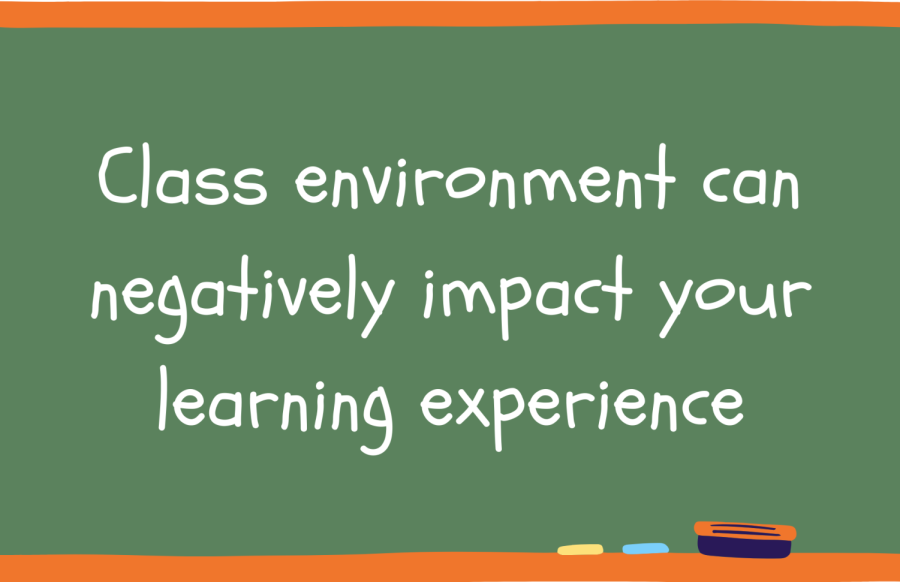Class environment can negatively impact your learning experience
May 17, 2022
This previously ran in our April 2022 print issue.
Harsh fluorescent lights, uncreative desk rows, freezing temperatures, squeaky chairs – all of these factors negatively impact a student’s ability to learn, it’s time we do away with them and create more comfortable classrooms.
What difference does it make?
Ryan Hannah of Western Michigan University, who studies the classroom’s effect on learning, attributes students’ learning abilities to three factors: the students who are learning, the content being taught, and the environment facilitating all of this. If we don’t modify current environments, students run the risk of being incapable of achieving academic success.
“A bad class environment is just as detrimental to learning as a bad curriculum,” Hannah claims.
Students’ ability to retain information is reliant on a comfortable environment in the classroom. Considering how the cur- rent classroom standard is, it’s astounding that any students are succeeding at all.
This extends beyond primary and secondary school, the importance of a learning environment is extended into further education, and even into home lives. It all leads back to a core concept: Life Space. Marc Brackett from Yale University and John Mayer from the University of New Hampshire describe Life Space as, “the individual’s external traits.”
At its core, Life Space is a concept intended to describe what surrounds us as people. It’s the food we eat, the content we enjoy, the relationships we form, and most notably, it is the setting where all of this takes place. Think of what posters hang on the wall, what artwork surrounds us, music that facilitates day-to-day life.
Through understanding that these external factors affect the quality of life, one must understand that this extends to schools and classrooms too. It’s imperative that modern classrooms are changed to suit these needs in students.
School administrators and teachers are left with two options: to remain the same or to modify. Should they choose to modify, they must prioritize student opinions and accessibility.
Not all students are suited to learning at a desk.
Some might prefer standing, sitting on a bean bag, or disabled students may have more specific needs. Perhaps a student has specific requirements for light fixtures, whether they are prone to headaches or have difficulty seeing with current lighting standards.
Either way, a classroom must be modified. Regardless of the specificity of the issue, the key to solving it is flexibility. It is impossible for a student to achieve the most success possible if their needs are not met.
The George Lucas Educational Foundation states that, “Since implementing flexible classrooms, Albemarle County Public Schools have noticed that their students’ grades have improved. Their students seem happier and more engaged. Their students are participating more and having more invigorating conversations.”
Considering the benefits, it is critical that schools be modified to accommodate student needs. When the effectiveness of education itself is on the line, it is crucial that no small detail is overlooked. Flexible seating, a mix of tables and desks, and homier ambiance through posters and student work are all steps in the right direction. More than that, schools must begin to ask their students directly, be that through surveys or questionnaires, and make the requested changes so that students can flourish and thrive in the academic world.
Debasish Mridha, who is a physician, philosopher, and author once said, “The purpose of education is to open the windows of the mind.”
How can this be achieved if the needs of students remain untended?
We risk students’ comfort, academic success, and overall well-being if we don’t restructure the classroom as soon as possible.












